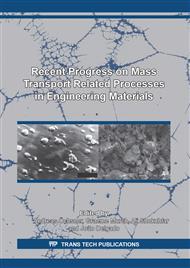p.3
p.11
p.21
p.32
p.38
p.45
p.51
p.59
Water Absorption Curves versus Gamma-Ray Attenuation Profiles: A Comparative Analysis of Hygric Permeance Results
Abstract:
The knowledge of moisture transfer in multi-layered building materials and components using numerical simulations is fundamental to predict the behaviour of that building materials and components when in contact with moisture and to avoid some possible future pathology guarantying a correct performance.This paper describes a comparative analysis of experimental values of Hygric Permeance (HP) obtained by water absorption curves and gamma-ray attenuation profiles, for perfect contact interface. ARTICLE REVISED ON 25.03.2022
Info:
Periodical:
Pages:
32-37
Citation:
Online since:
March 2020
Authors:
Price:
Сopyright:
© 2020 Trans Tech Publications Ltd. All Rights Reserved
Share:
Citation:


